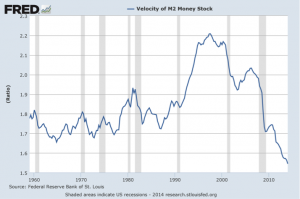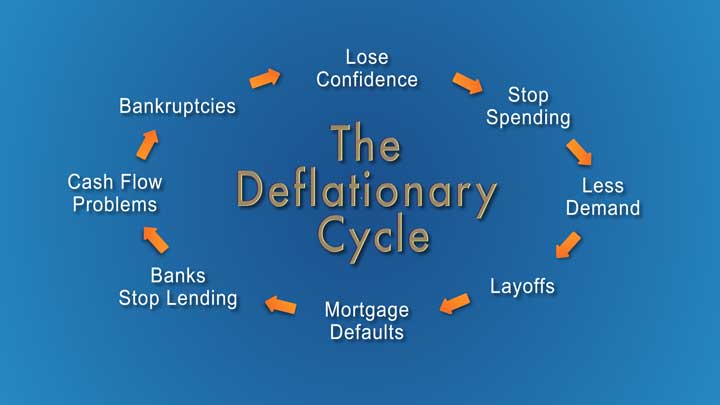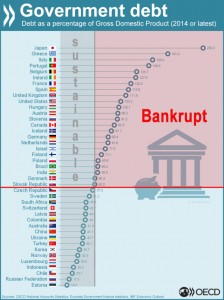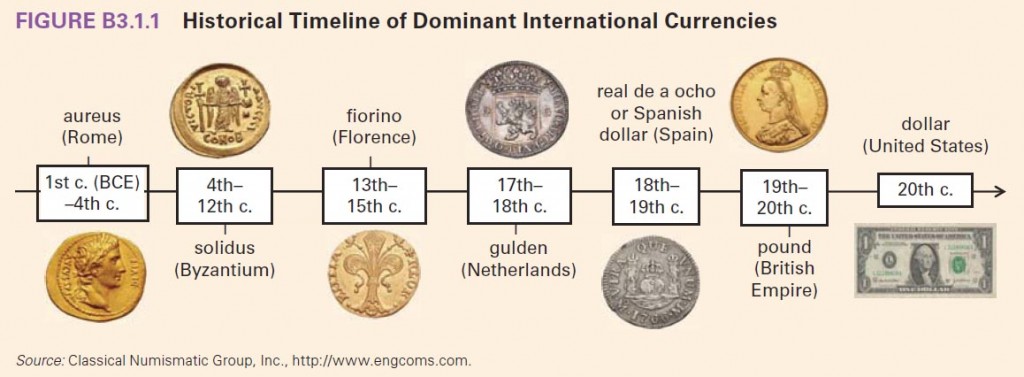All About Deflation |
DEBT: The word that will become the most reviled word in the English language. It is the source of all our problems. As more and more money goes to servicing the debt, less is left for the free services we all enjoy. In fact, governments have borrowed heavily to give their constituents everything they ask for so that, in turn, they vote their governments back into office.
It’s a crazy system, because of course, the constituents (you and I) are on the hook for the debt, debt that by default, will move onto the shoulders of our children.
Contrary to the Keynesians‘ way of looking at the economy, you cannot spend your way out of debt! You simply postpone the inevitable, while digging a much deeper hole. That’s what central banks have done to us, through “stimulus” and buying up of bad debt—they’ve increased the debt, undermined the economy and made matters far worse. We’re about to pay the price.
Deflation Has Begun
I see deflation all through the market, but then I’m sensitized to it.
 One measure of deflation is the velocity of money. On the left you can see a chart showing how the velocity has decreased dramatically over the past few years.
One measure of deflation is the velocity of money. On the left you can see a chart showing how the velocity has decreased dramatically over the past few years.
The velocity of money is the rate at which currency changes hands in the economy. If people stop spending, there’s less money changing hands and so it becomes more valuable; it is harder to come by (scarcity raises its value, like any other product or service).
If people aren’t spending (due to lack of disposable income), companies start lowering the price of items just to move inventory.
One of the most noticeable recent events is that Ford just marked down its flagship pickup truck, the F150 by $10,000! That’s because retail sales are sliding again … badly.
Travel is another area that’s been hit early and hard. There are deals to be had everywhere. Vacations have never been less expensive … and we’re just getting started!
In the spring of this year, economists started to blame the weather for the slowdown in retail sales. The fact of the matter is that unemployment was affecting sales. You can only blame the weather for so long …
But this is just the tip of the iceberg. And it doesn’t affect only prices. It also hits wages and employment generally (and assets … big time).
The Printing Money Myth
From time to time I hear people say “Don’t worry. If there’s a problem, the government will just print money.” That’s comforting, I guess, to someone who doesn’t understand how currency gets into the system.”
Our current financial system is built on debt and credit. The only way to get money into the system is to lend it, or buy up distressed assets. Nobody is going to drop thousands of dollars into each and every bank account in the nation (nice thought, though!).
So, the tactic has been to provide more credit to the banks and push them to lend more money at depressed interest rates. However, if people and businesses are not feeling confident about the economy, they’re not going to borrow. But banks have been trying to entice them into borrowing with interest rates that are next to zero.
To some extent they’ve been able to do this in real estate. They’ve created a bubble. People are bidding up the value of housing, due to the availability of low interest debt. However, interest rates will eventually go up, along with taxes. Bubbles always burst; they have all through history.
The result, of course, is that thousands will lose their homes, and end up with bad credit records.
The Deflationary Cycle
And this brings us to the root cause of deflation—confidence—plain and simple. Confidence in the economy, and as a result, your own financial well-being.

If people lose confidence, they stop spending, that creates less demand for products, companies lay off workers, people start to default on mortgages, banks stop lending money, credit dries up, and the bankruptcies begin … and on and on in a vicious cycle.
That what happened in the 1930s. It’s what happened in 1835 (with the Panic of 1937 a couple of years later), the largest depression in US history until 1929 … and interestingly enough …. separated by common cycle lengths. History repeats.
So we’re sliding into a depression, but the government will be the last one to admit it. In Canada, we’re now in a technical recession, but the Minister of Finance just won’t even say the word. Well, there’s an election on the way here … and governments know that a bad economy gets them kicked out of office, even though they have nothing to do with it. Perception unfortunately, is reality.
Governments love inflation. Because inflation raises the Gross Domestic Product on paper (the country’s income) and allows them to borrow more money against it, putting you and me further in debt.
Worldwide Government Debt
 Look where they are now (click to enlarge). The chart on the left is up to date as of 2014.
Look where they are now (click to enlarge). The chart on the left is up to date as of 2014.
Most advanced nations are bankrupt. They’re well beyond the debt sustainability level, meaning it’s impossible for them to pay it back their loans. There are two options … default on the debt or inflate. In other words, print money.
But inflation lowers the value of our currency. Since 1913, North American currencies have dropped in value by about 96%. That’s right … $100 dollars back then is worth $4.00 now. Seem like it’s harder to stay afloat? Well, that’s because it is.
Inflation is not good unless you’re a business owner or have a salary pegged to the rate of inflation. Inflation is simply financial robbery.
In fact, central been trying to inflate (that’s called stimulus) but so far, it hasn’t worked. We keep sliding downhill economically … into deflation.
Deflation actually raises the value of currency … if you have it. Assets, like houses and cars and other things drop drastically in value … and so if you’re smart, deflation presents a huge opportunity.
Fiat Currency
It’s important to mention fiat currency, because this is the tool that allows bankers and politicians to line their pockets and steal from the people. It also allows deflation to set in.
At the end of World War II, at the Bretton Woods Conference, Europe and the rest of the world embarked on a lengthy period of reconstruction and economic development to recover from the devastation inflicted by the war. Gold had been the base reserve currency, but the new agreement named the US dollar as the base currency, pegged to the price of gold. It also set up a system whereby currencies could be free-floating and traded against each other.

However, on August 15, 1971 President Richard Nixon terminated the relationship of the dollar to gold, bringing the Bretton Woods system to an end. The US dollar was still the reserve currency but had nothing to back it up except the promise of the US to make good on its value.
Governments love fiat currency because it allows them to manipulate our money for their purposes. They can create inflation, which lowers the value of currency, while increasing the costs of products and services. They are very good at convincing the population that inflation is a “good idea.”
It also allows the government to borrow larger sums of money. Higher wages (as result of inflation) along with higher costs create a larger Gross National Product number and this allows them to justify greater amounts of debt. It’s simply a numbers game.
When currency is not pegged to money (gold or silver), its value is solely based upon confidence.

In Rome and other societies, the trick was to gradually remove the amount of precious metal (gold and silver) in coinage until the currency was worthless. This is inflation—just another method of achieving the same end.
However, what we have now is a situation in which the world is bankrupt and based on a currency system with nothing to support its failure.
Strategies for the Future
So what do you do to protect yourself against this ponzi scheme (and by the way, this is nothing new—governments have pulled the same tricks on their populace for centuries)?
In the shorter term, we’re expecting spiralling deflation. What happens during a depression is that as large financial contracts default, creditors want to get paid back in the reserve currency (which is the US dollar). This starts to make the demand for the dollar very much stronger and it goes up in value against other currencies. This causes deflation.
Eventually, we may end up with hyperinflation, but that’s likely sometime down the road. At that point, you want to have some gold in your portfolio, because currency eventually will need to pegged back to gold (money).
In the meantime, there are strategies that make a lot of sense during a deflationary phase. Let’s look at the list I ran through quickly in the video:
Cash is king. Currency goes up in value, while prices for just about everything that’s not a necessity, go down in value. Food is a notable exception. At the same time we have a major economic collapse, we also have a major worldwide drought. This raises the scarcity of food. Expect banks to stop lending and for the current credit card scheme to end. It’s a good idea to have cash on hand in a safe place just in case banks start to fail, as they have so often in the past.
Get out of debt, because interest rates are going up. They may not go up immediately, but governments are in debt. The only way they have of solving that problem is to tax the population. Banks, if they run into problems, will raise interest rates. They’ll also start to limit credit and call in loans.
If it makes sense, sell your home and buy it back in a few years at a fraction of the current selling price. In the 1930s, homes devalued by over 80% very quickly. Many homes previously owned by the fabulously wealthy or well-to-do (who has lost everything is the stock market crash) were on the market for fire sale prices. We expect to see this scenario once again. During deflation, all assets drop dramatically in price. You can already see this in the price of oil.
Hold off on major purchases … because things are going to get a lot cheaper. As people stop buying, products go down in value. Double this with the fact that currency is going up in value and you have lower priced services and products.
Traditional investment is dead. Markets have already topped. Lower demand right across the board will lower the price of most products and services. As a result, more and more companies will land on hard times. Most bonds are also vulnerable. We’ve already heard of major cities going bankrupt. If you read your history, you’ll know that no investment is safe during a major collapse. That’s why cash is king.
Community is exceptionally important. Mend any broken relationships with family and friends. You’re going to need them. Have services that you can offer to others, to make yourself a more valuable commodity.
In reality, deflation is cathartic, and a necessary condition to heal the economy.
These are only some of the strategies you can use to defend your wealth and sure your viability during an major downturn. I hope it provides a sense of what’s to come.
So don’t get fooled by the idea that inflation is a good thing. It’s ruined the world economy. We’re awash in debt. Thank you politicians and bankers!
Deflation is good .. if you’re prepared. The train is just leaving the station …. It’s time to do some research and get ready to buck the trend.
______________________________
Notes:
On Canada’s Technical Recession
Canada’s top banker had warned in 2014 that our economic growth would be ‘atrocious.’ That prediction has come true. Canada’s GDP shrank at a 0.6 per cent pace in the first quarters of 2015. It’s the first contraction in nearly four years and it was worse than what economists predicted.
On Deflation and Economic Booms.
“There is no means of avoiding the final collapse of a boom brought about by credit expansion. The alternative is only whether the crisis should come sooner as the result of voluntary abandonment of further credit expansion, or later as a final and total catastrophe of the currency system involved.”
On Keynesians
Keynesians view deflation as the source of a destructive cycle in which; asset prices plunge, companies cut jobs, spending plummets, and a permanent recession sets in. Therefore, the prevailing current view maintains that deflation is something that needs immediate intervention of massive monetary stimulus–you can say they have become deflation phobic. This is why I find it fascinating that Keynesians, who proliferate in central banks and in the financial media, are relentlessly cheerleading the recent spate of deflationary data. And, just to be clear, deflation has not been limited to the New England Patriots’ footballs–it is everywhere you look.

Did I hear you say on Rick Wiles program ,that you were writing a book on “How to thrive in Deflation”? If so when can I buy it? I totally believe your analysis of what is coming at us. Do you think the big boys will be able to take away our cash? Also besides your website,where should I look for education? Many thanks and God Bless!
Max,
Yes, you’re correct. I’m working as diligently as I can on it. I’ve just finished 3 video scripts on our ponzi scheme we call a banking system and I hope to have them live this weekend. This forms part of the material for the book, but has sapped a bit of my time.
If you go to my other website, to the forum, you can download a really simple to read pdf, “What has the government done with my money?” http://worldcyclesinstitute.com/forum/deflation/what-has-the-government-done-with-our-money/
That’ll be a good start if you want to understand inflation, deflation, and what governments like to do to us.
I can’t give you a date on the book, but I’m self-publishing so it shouldn’t be a long wait. Thanks for the comment!
Delation is raising it’s ugly head and I expect to see it spiral out of control in the coming years.